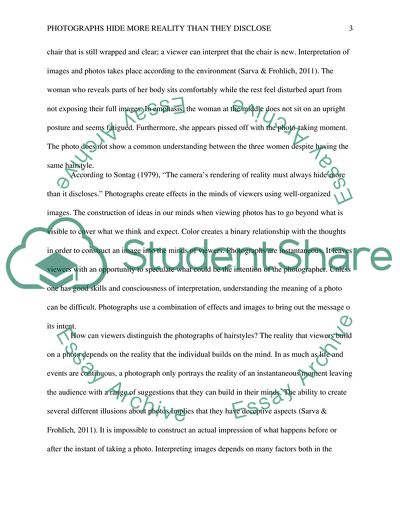Cite this document
(Photography Hides More Reality than They Disclose Essay Example | Topics and Well Written Essays - 1250 words, n.d.)
Photography Hides More Reality than They Disclose Essay Example | Topics and Well Written Essays - 1250 words. https://studentshare.org/visual-arts-film-studies/1844424-the-cameras-rendering-of-reality-must-always-hide-more-than-it-discloses-sontag-s-1979-on-photography-london-penguin-books-ltd-23
Photography Hides More Reality than They Disclose Essay Example | Topics and Well Written Essays - 1250 words. https://studentshare.org/visual-arts-film-studies/1844424-the-cameras-rendering-of-reality-must-always-hide-more-than-it-discloses-sontag-s-1979-on-photography-london-penguin-books-ltd-23
(Photography Hides More Reality Than They Disclose Essay Example | Topics and Well Written Essays - 1250 Words)
Photography Hides More Reality Than They Disclose Essay Example | Topics and Well Written Essays - 1250 Words. https://studentshare.org/visual-arts-film-studies/1844424-the-cameras-rendering-of-reality-must-always-hide-more-than-it-discloses-sontag-s-1979-on-photography-london-penguin-books-ltd-23.
Photography Hides More Reality Than They Disclose Essay Example | Topics and Well Written Essays - 1250 Words. https://studentshare.org/visual-arts-film-studies/1844424-the-cameras-rendering-of-reality-must-always-hide-more-than-it-discloses-sontag-s-1979-on-photography-london-penguin-books-ltd-23.
“Photography Hides More Reality Than They Disclose Essay Example | Topics and Well Written Essays - 1250 Words”. https://studentshare.org/visual-arts-film-studies/1844424-the-cameras-rendering-of-reality-must-always-hide-more-than-it-discloses-sontag-s-1979-on-photography-london-penguin-books-ltd-23.


